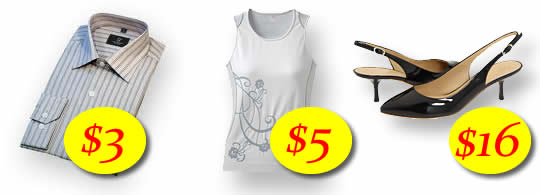What’s A Return Policy Worth?
Ask catalog or Internet retailers what a return cost them, and they will likely be able to cite some very specific numbers reflecting shipping costs, processing labor, damaged packaging, and so on. But it turns out there’s a specific value that customers apply to returns, or, more accurately, the OPTION of returning a product. That value varies by the type of product, the product price, and other factors.
A study by researchers at Northwestern and MIT found that consumers treated a return policy as equivalent to a price difference in the product. Not unsurprisingly, that value varied depending on how “risky” the purchase was. The paper goes through a whole lot of math to arrive at what the authors call an “option value” – more or less, how much more the consumer will pay for a strong return policy. They arrived at these values:
Men’s Top – $3.19
Women’s Top – $5.00
Women’s Shoes – $15.81
The relation of the option value to risk is apparent – a guy buying a shirt has a good degree of certainty that the size will accurate enough to provide a reasonable fit, and he is likely not looking for a precise color shade. Hence, the ability to return the product was worth a mere $3. Women’s shoes, on the other hand, have a variety of risk factors – despite standard sizing, fit can be highly variable and the chance of a poor fit is high. In addition, exact color can be important when coordinating with outfits or accessories, and there’s some chance that the photo doesn’t accurately portray the actual color. Thus, the ability to return women’s shoes was found to be more than five times as high as the men’s shirt.
Return Value Variables
Naturally, these dollar values will vary greatly, even within product category. Flip-flops or beach shoes no doubt are far less risky to purchase than stylish sling backs. A $300 pair of shoes is a much larger risk than a $30 pair. Repeat purchases are lower risk than first-time buys. A “free shipping” return option is likely worth a little more than one that makes the customer pay. An in-person purchase has a much lower risk than an online purchase. Each of these factors affects the option value.
Make a Good Return Policy Very Visible
The takeaway for retailers is that a return policy has a value that can be expressed in currency terms for each item. In evaluating competitive pricing, compare their return policies in addition to their prices and shipping fees, if any.
If you have a friendly return policy, be sure your customers know about it. If customers aren’t totally clear on how favorable your policy is, you won’t “get credit” for your added value when customers compare prices.

